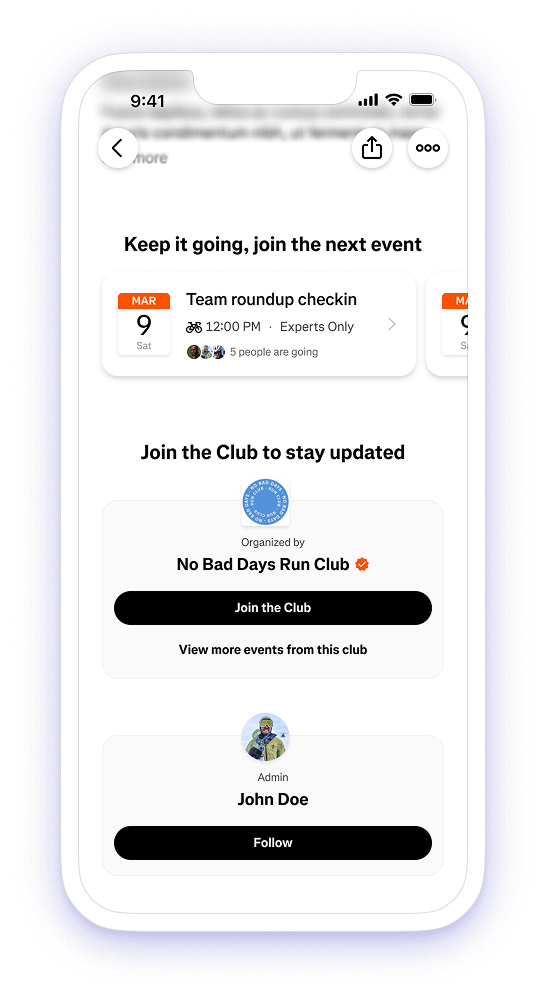Creating a post-event ecosystem to close the engagement loop.
Working with the Strava Community Engagement team (2025)
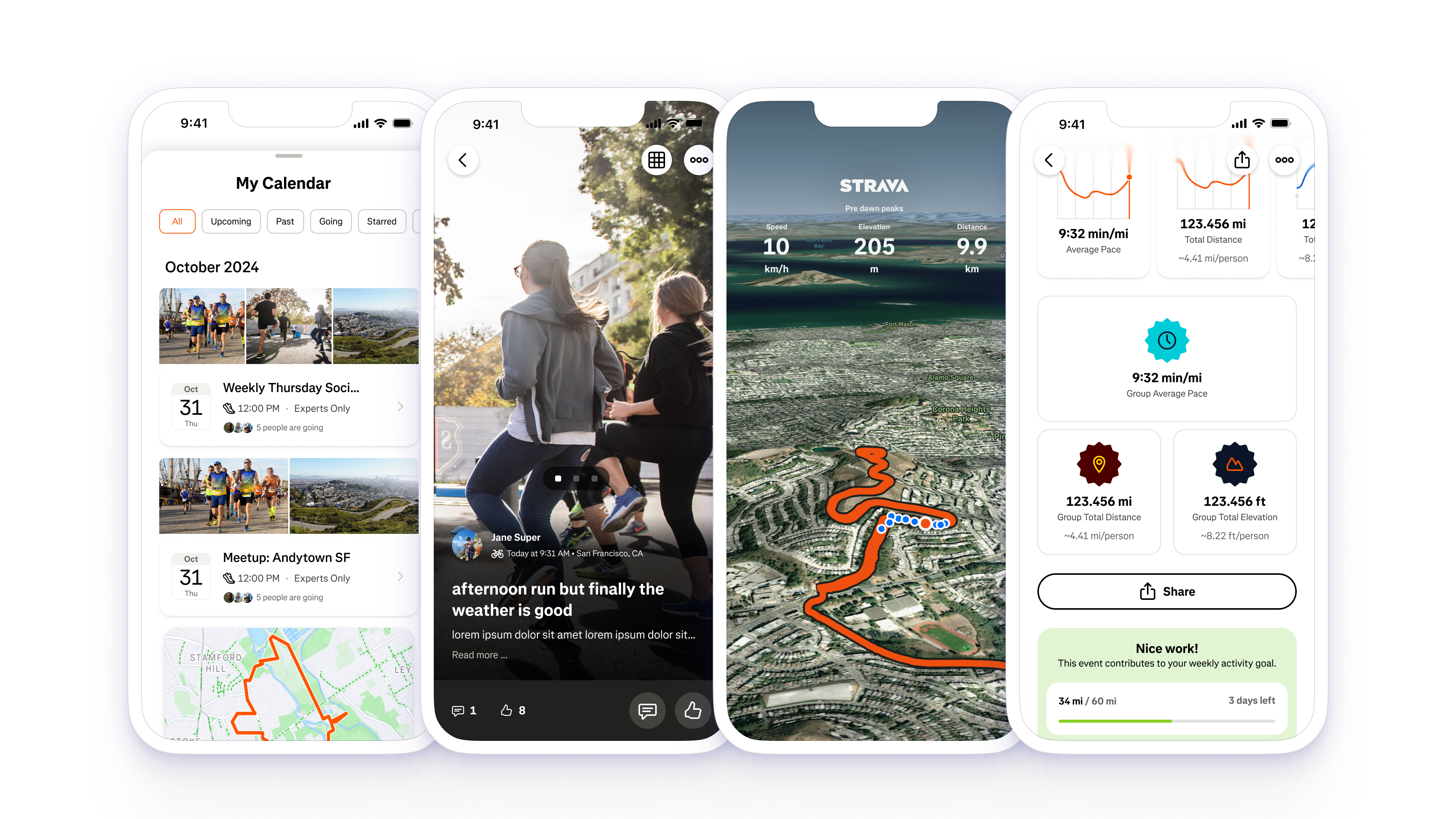
What is Strava:
Strava (2009) is an activity tracker with social features.
Context:
Strava aimed to attract new audiences to the platform, using Events as a key entry point. When an Event resonates with users and their networks, it encourages sign-ups. By enhancing the social experience after events, we give users a reason not only to join but also to return to the app.
Role:
Senior Product Designer
Involvement:
Vision, Design
Timeline:
1-2 months (2024-2025)
Results:
Not Shipped / Deprioritized
-
How might Strava gain new sign ups through a post-event experience?
-
What features engage users driven by meaningful growth and friendly competition?
At Strava, we understood that new sign ups were usually people who hear about the app via word-of-mouth or social media. Run and Ride events were things that were shared often, and people would join Strava just to keep tabs on any recurring events.
The hypothesis was by adding social spaces to event pages, we expected stronger post-event connections and more organic growth through sharing and invites.
-
Understanding what Event creators vs attendees were looking for through UXR
Event creators were part of a social flywheel as they were the ones sharing and marketing about their upcoming group running event. Through research we found that they do want data about their recent group event to inform them of athletic progress, media uploads, sharing, and discussion.
Like social posts, attendees wanted opportunities to share and show off their data.
Strava is in a unique position of being about to bring together bits of data together to create a story about the group.
-
Understanding the technical limitations
It was difficult for a Strava user to find a collection of events they had decided to commit to or had just attended.
Things like commenting, posting, or uploading media to a post-event page (that didn’t exist yet) meant sequencing the work very specifically. It was imperative to work closely with the Product Manager to make sure we were aligned on sequencing the project.
The events pages were from 2017, and the aging technology meant that adding in particularly interactive features were limited. The team suggested to rebuild the event pages to have the best experience.
-
Ensure that all past events links lead to the post-event experience.
If the user was able to access an event page that already occurred, we should forward them to the post-event experience.
-
Build an easy way for users access all past and future events they have committed to.
I learned a lot about color contrast ratios and how to gauge when to use specific rulesets. While most of the guidelines are straightforward, Discord as an app is complex and required some specific interpretations of rules.
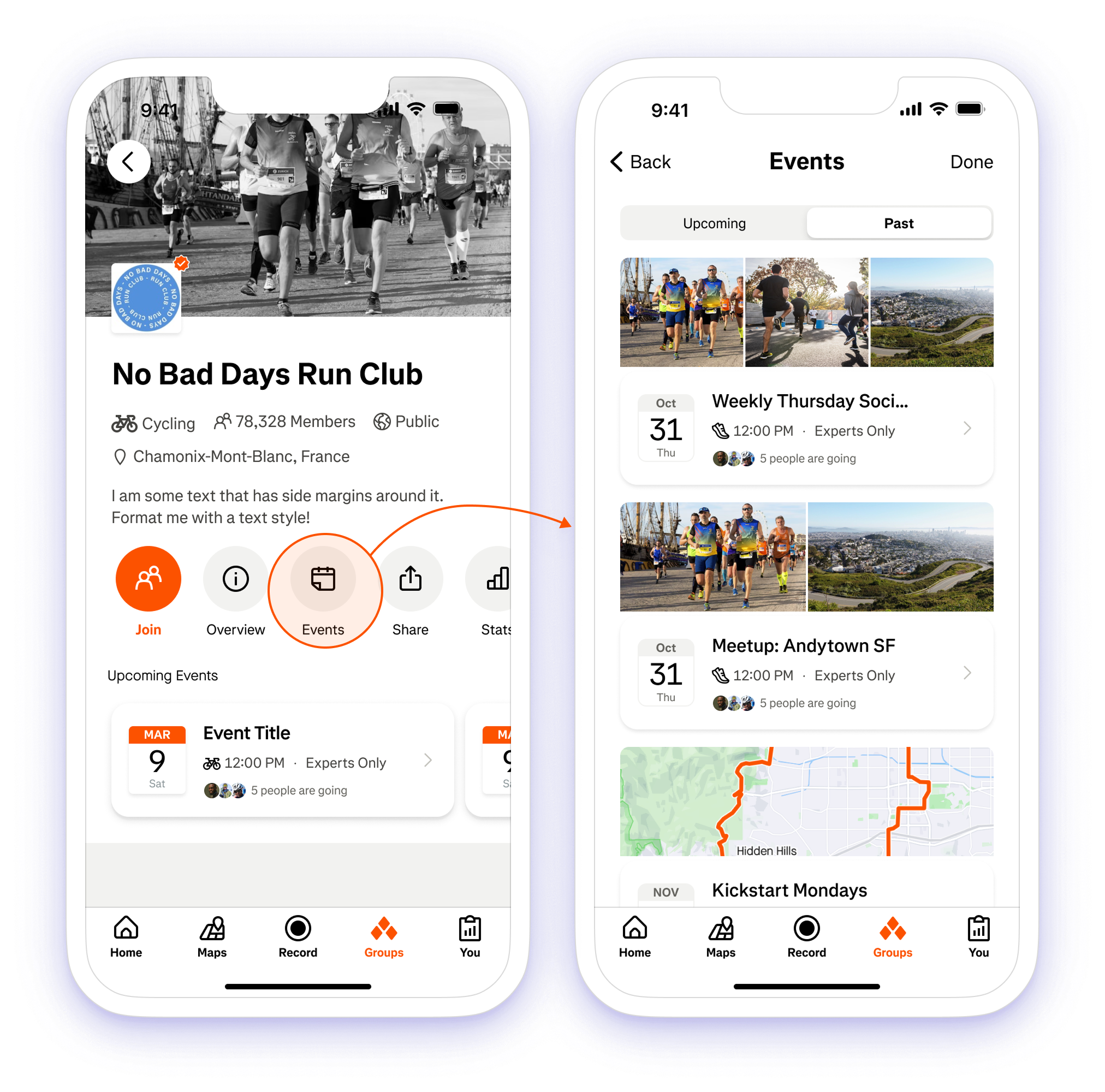
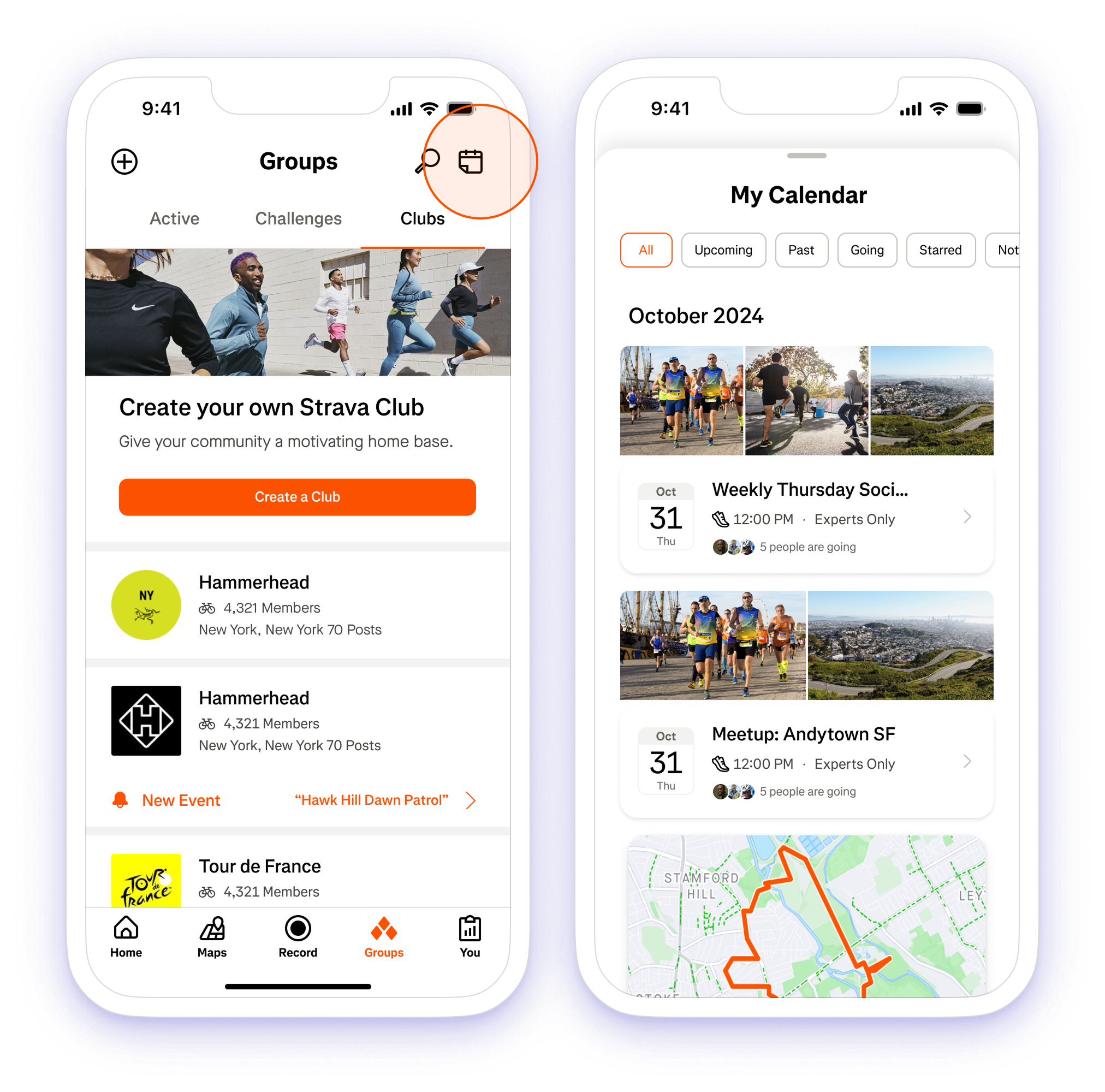
-
Media is inherently social. Showcase media uploads as photo albums or reels.
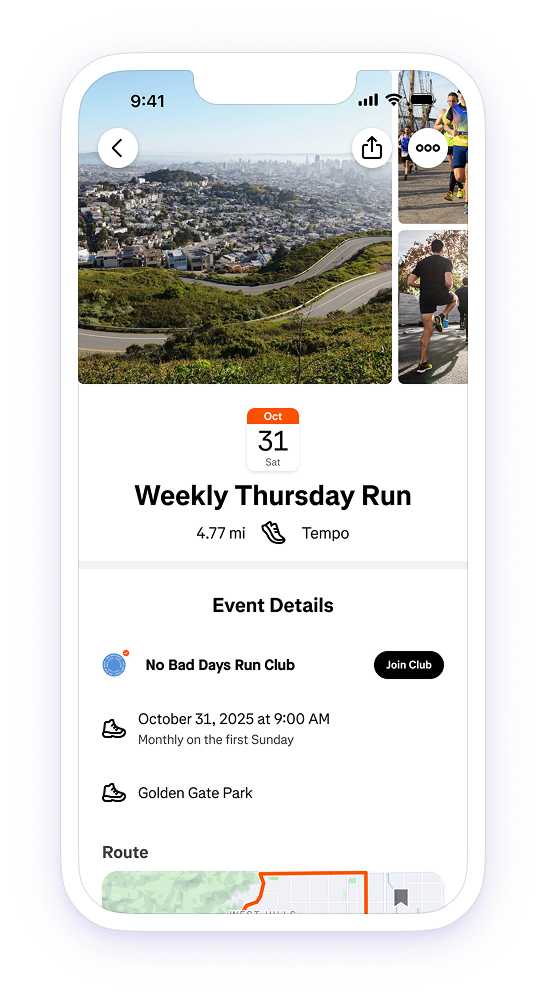
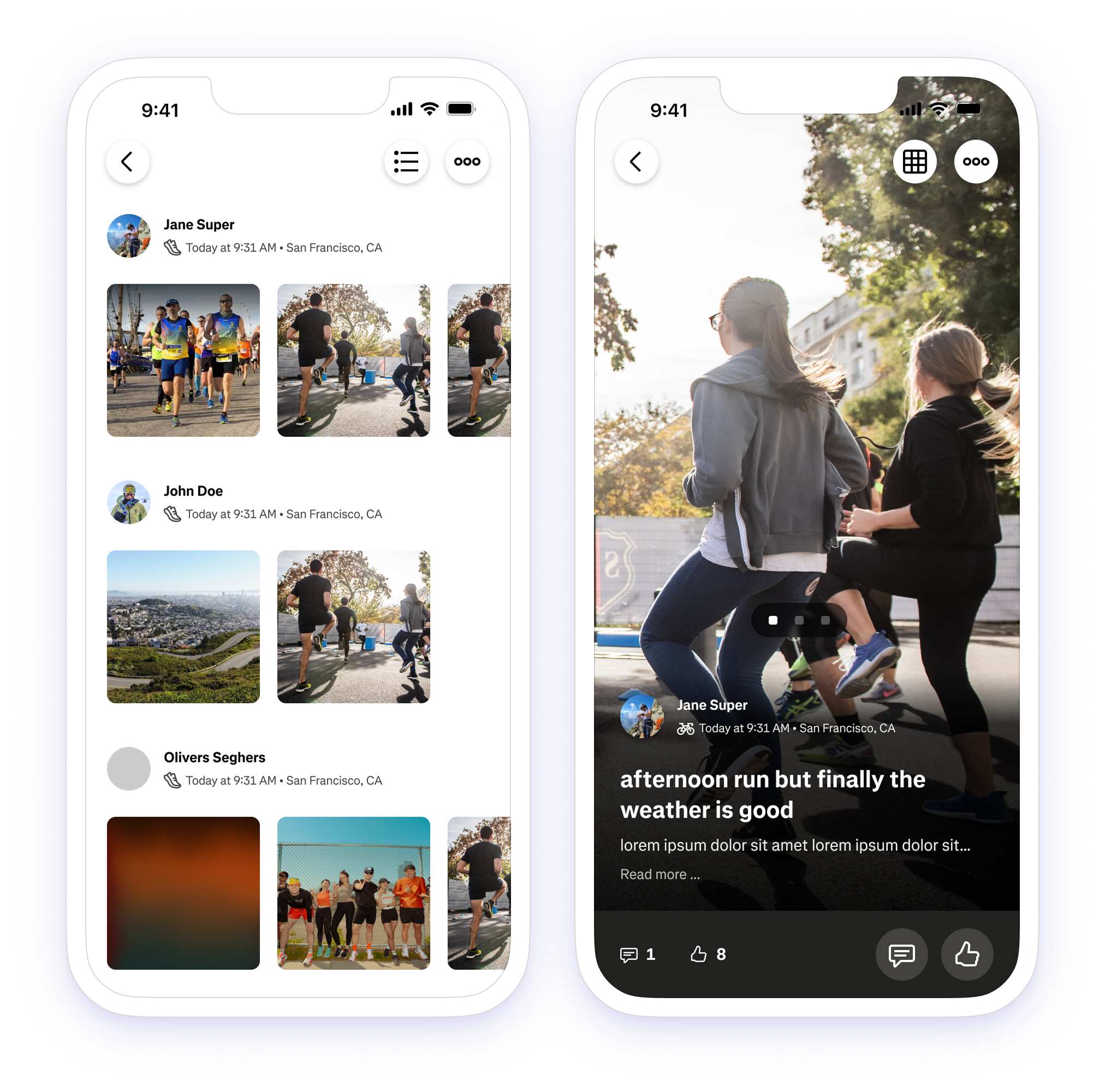
-
Allow users to engage and connect to each other through the events page. Discussion is evidence of interest.
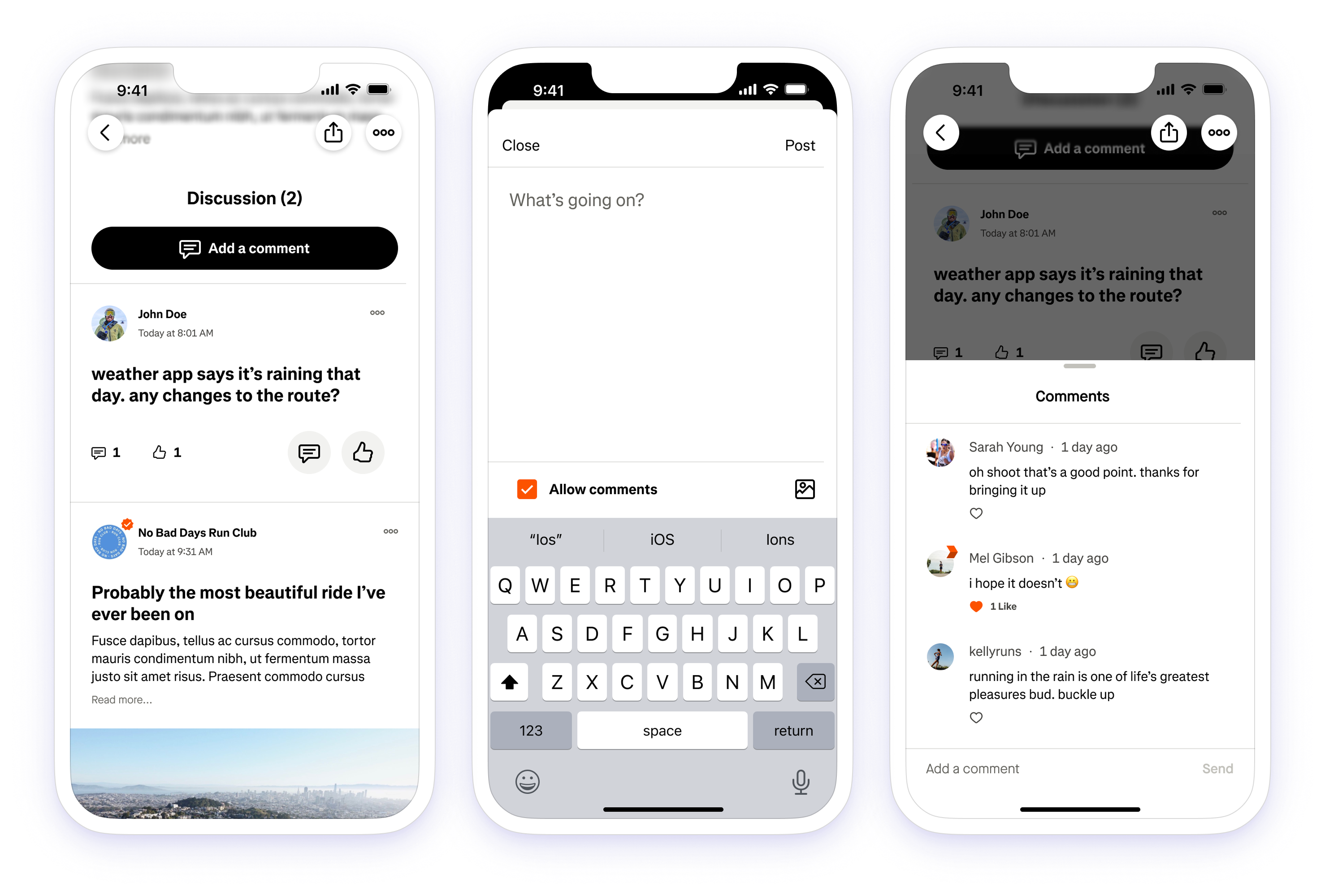
-
Use data to tell a story. Encourage friendly competition.
Strava’s unique position as an activity tracking aggregator meant that it had the opportunity to connect data points together from different people to show you something interesting.
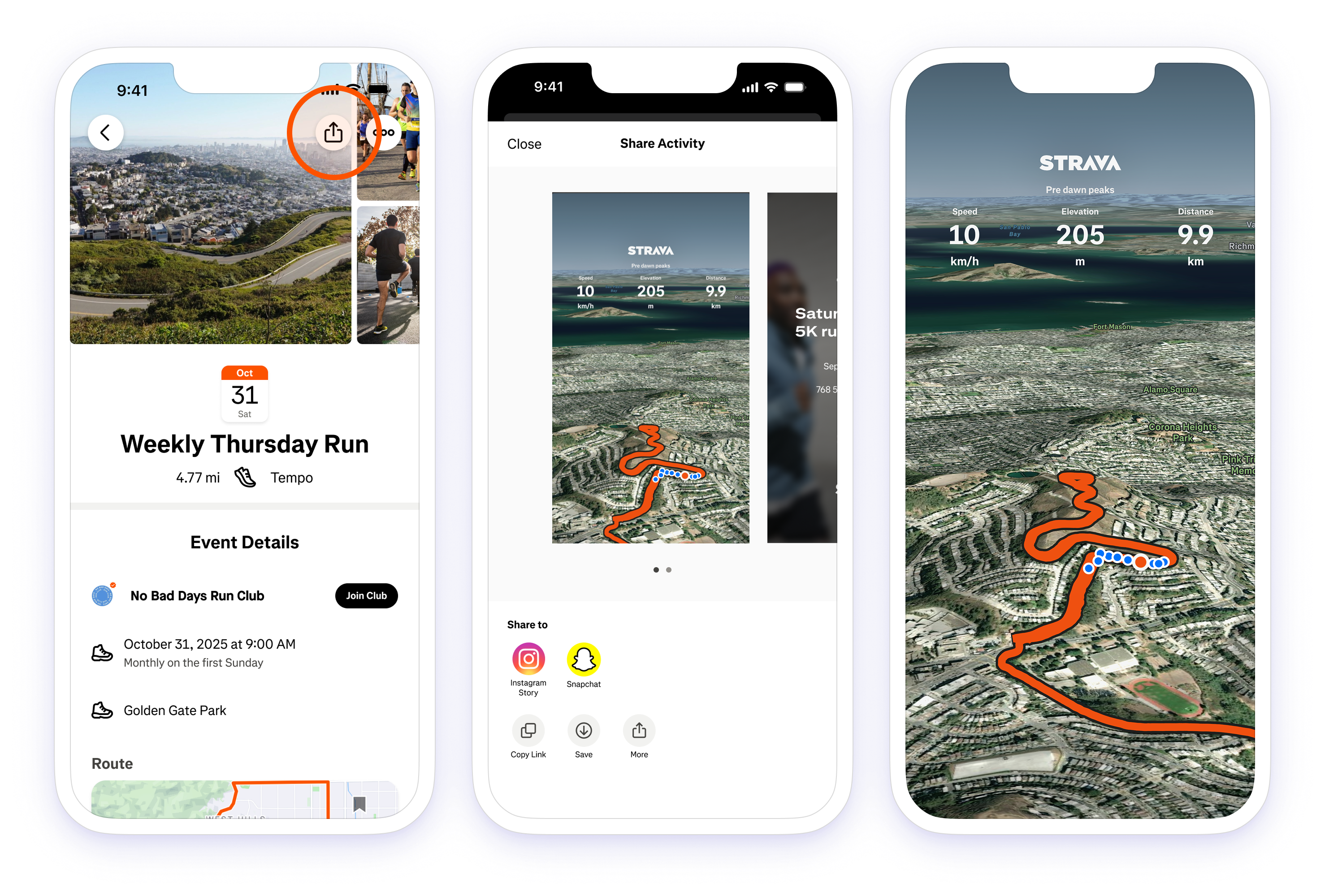
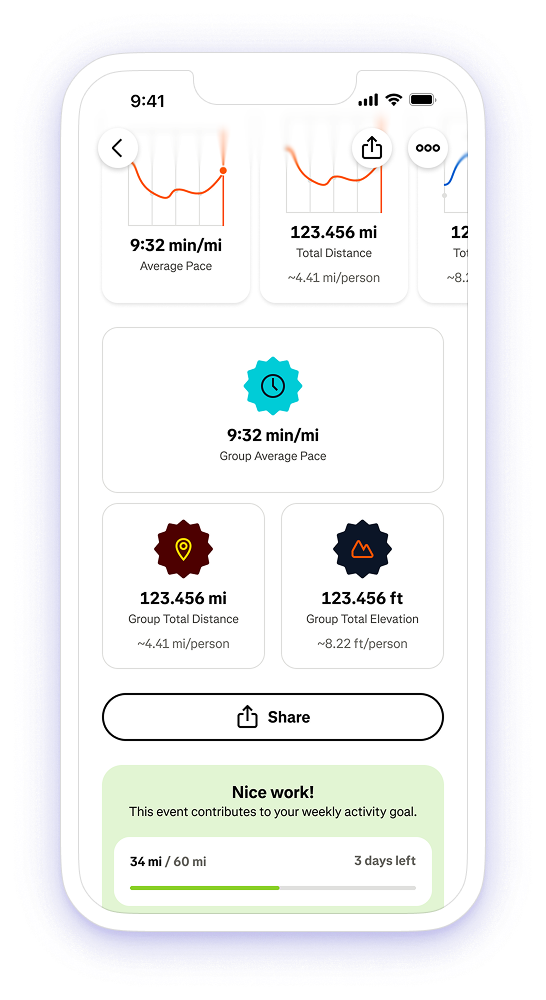
-
Promote future events from same club or other similar events from different clubs so that the user always has something to look forward to when landing on a post-event experience.
